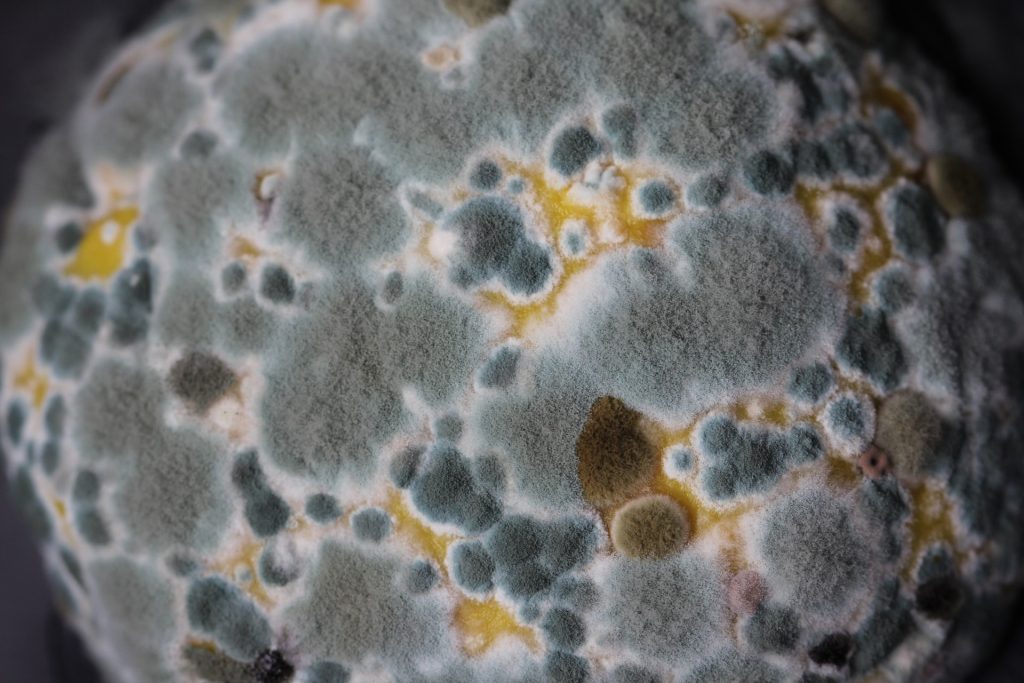Mold can thrive in carpeting, which is a high-risk region in the home. Mold growth will occur quickly if mold spores in the air settle on wet or damp locations indoors with dust for them to feed on. If the conditions are appropriate, wall-to-wall carpeting and area rugs can provide an ideal breeding environment for mold.
Mold’s Effect on Your Health
Molds create allergens, which are compounds that can induce allergic reactions, irritants, and mycotoxins, which are potentially poisonous substances. Insensitive people may experience allergic responses after inhaling or touching mold or mold spores.
These allergic reactions can be symptoms of hay fever-like sneezing, runny nose, red eyes, and skin rash. Some patients report these signs early on, while others take a delated effect. Additionally, mold allergy sufferers may experience asthma episodes as a result of exposure to the mold.
Mold growth may not be immediately evident on a carpet’s surface, but that does not mean it is not present. Mold would most likely only be visible on the surface of carpets, once an infestation has already progressed severely.
In the following paragraphs, you will find some examples of mold growth that has occurred or is expected to occur in your carpeting.
When You See Visible Mold Growth and Mildew
Although rare, mold development can sometimes be detected by eye inspection. This type of carpet is unlikely to be salvageable and should be discarded and replaced.
Even though mold growth isn’t evident on the surface of the carpet, it can sometimes be found beneath the carpet, where it can’t be seen. Always inspect both sides of a carpet suspected of containing mold.
Also, mold is most likely to blame for any discoloration or odor on carpeting that resembles mildew.
When You See Wet or Water-Damaged Carpet
Any carpet that has been damaged by flooding or standing water will almost certainly need to be discarded.
In this situation, the conditions are ideal for mold growth. Mold development will almost certainly occur unless the carpet is properly removed, cleaned, and dried within 24 to 48 hours—even if visible mold growth has not yet occurred.
Even then, mold growth is not guaranteed to be prevented by removal and cleaning. The carpet will very certainly need to be replaced.
When You Feel Wet Padding beneath Carpet
If the padding beneath the carpet becomes wet for any cause or becomes damp from condensation, the padding and the carpet on top are susceptible to mold growth. In rare circumstances, both the padding and the carpet may need to be replaced.
When Odors and Stains Keep Appearing
Odors and stains on carpets can be caused by a variety of factors. Additionally, some stains may not be a simple wine spill or crust of mud. If mold is suspected, samples can be gathered and submitted to be analyzed to see if mold has grown.
When You Have a Basement Carpet, Be More Attentive
The carpeting in basements below grade level is especially vulnerable in humidified areas or locations with large temperature changes that might cause moisture. Since these conditions are perfect for mold growth, it’s best to look for leaks in plumbing or ventilation in basements as a routine.
Conclusion
For such things as mold problems, prevention is your best option. You can look for a respectable property inspector to help you detect any mold growth in your house.
They can give you a comprehensive list of problems, risks, fixes, and observations in their inspection report. If you have any kind of mold growth in your home, it will be included in their report.
You can trust Ally Property Inspections for a thorough mold inspection in Birmingham. We are professional residential home inspectors equipped to ensure your home is free of any danger or risk. Book an appointment with us today!


